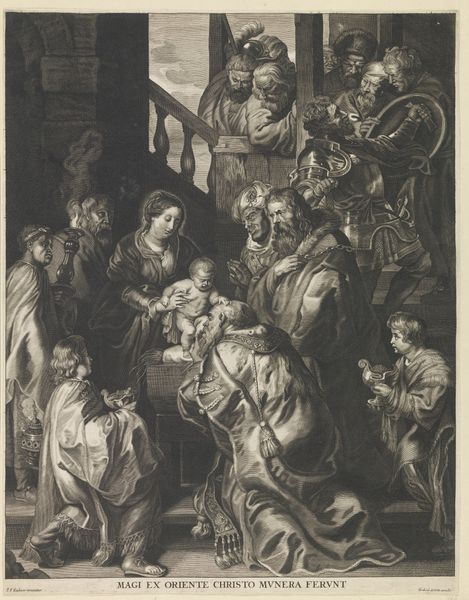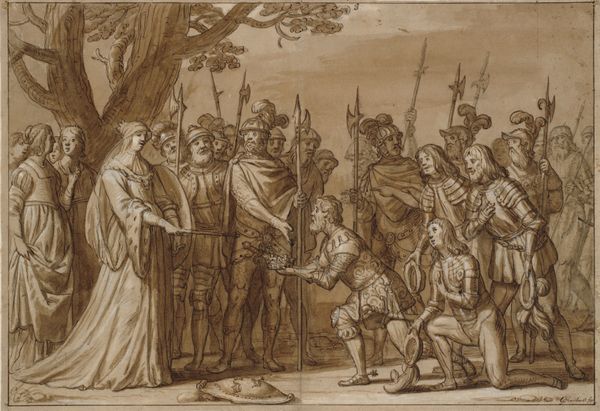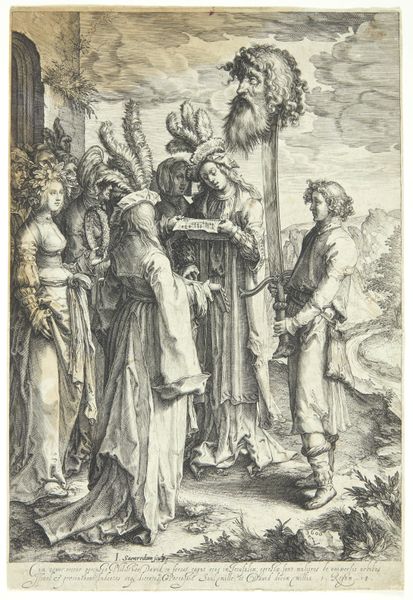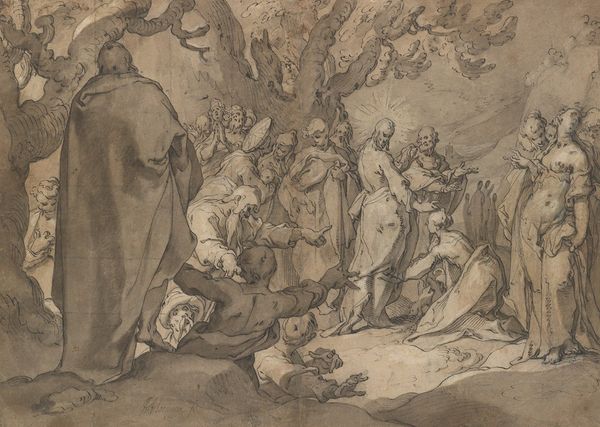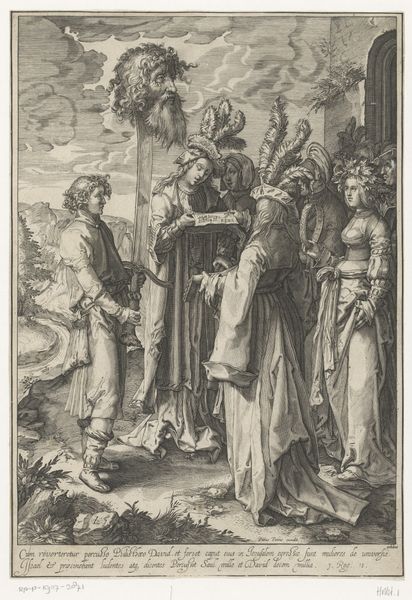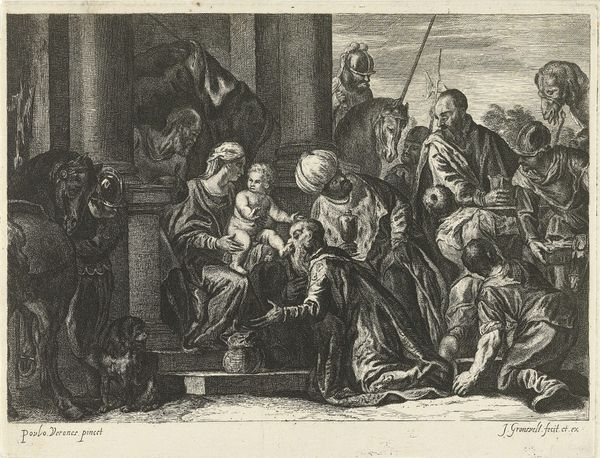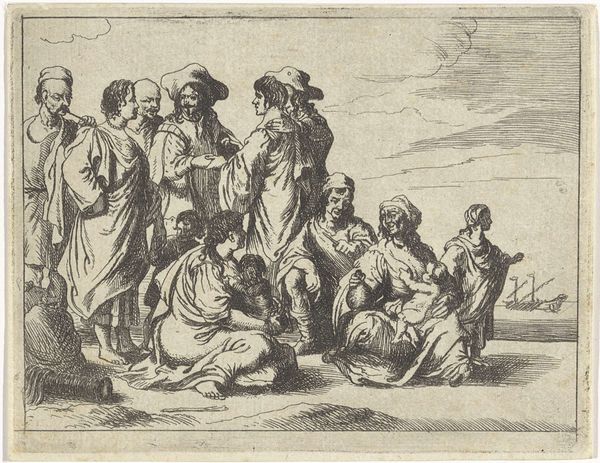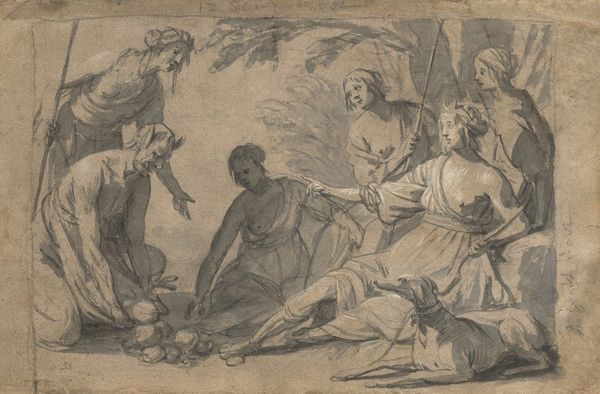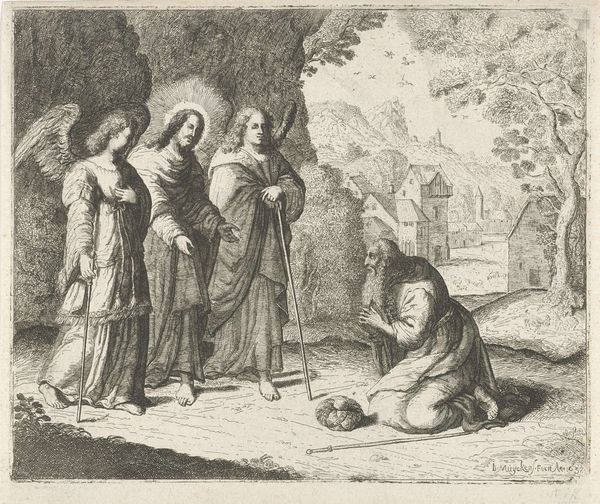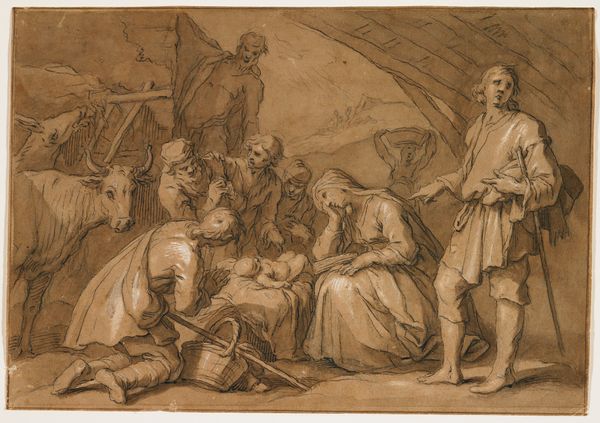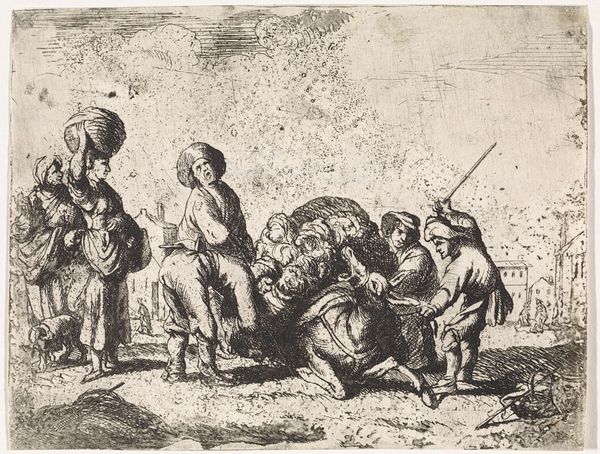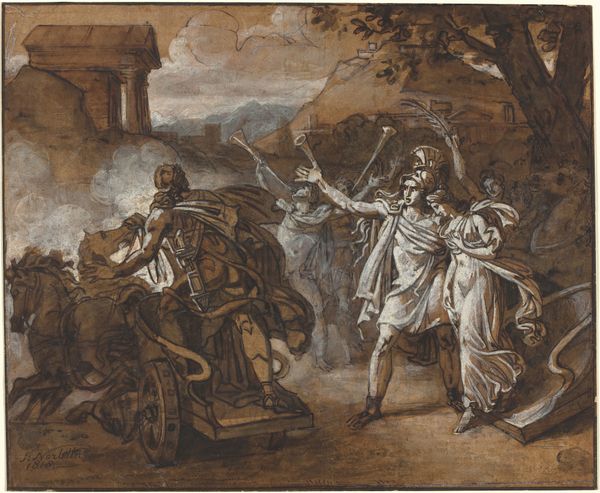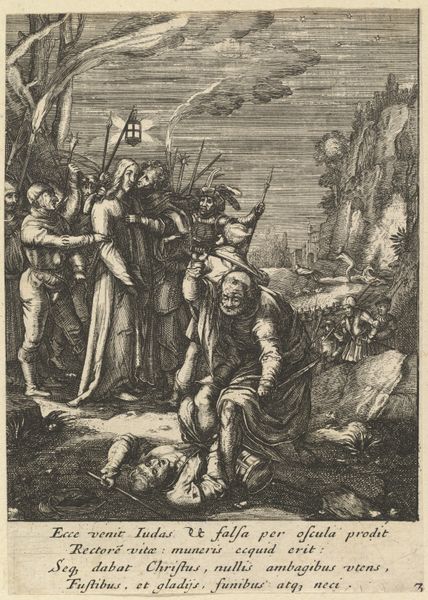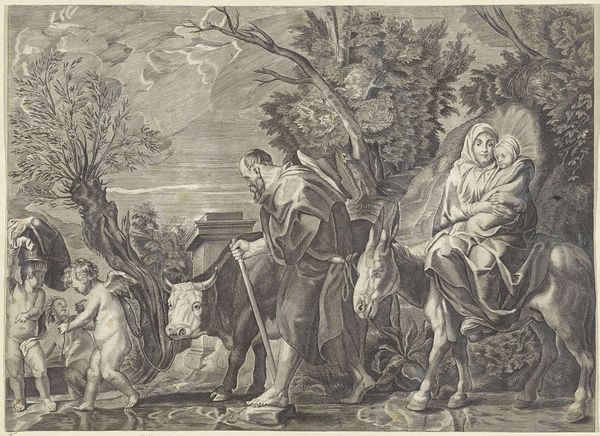
Et tatarisk gesandtskab på besøg i København 1624 - 1670
0:00
0:00
painting, oil-paint, canvas
#
portrait
#
narrative-art
#
baroque
#
painting
#
oil-paint
#
figuration
#
oil painting
#
canvas
#
group-portraits
#
history-painting
Dimensions: 218 cm (height) x 282 cm (width) (Netto)
Editor: So this painting, "A Tatar Embassy Visiting Copenhagen," made between 1624 and 1670 by Karel van Mander III... I’m struck by the sort of secretive atmosphere. The figures are grouped so closely, and the light seems to conceal as much as it reveals. What layers are you seeing here? Curator: The painting serves as a visual record of a historical encounter but it also presents us with questions around cultural representation and power dynamics. What does it mean to depict this “Tatar” embassy? Who gets to define and control that narrative? How do elements like clothing and weaponry reinforce or challenge existing stereotypes? Editor: It’s interesting you point out the visual narrative, as in who gets to tell the story. Does the artist’s choice of portraying the figures in shadow relate to who holds the power in the encounter? Curator: It certainly could. Think about the context. Copenhagen, 17th century: what would the general perception of the "Tatar" people be? Is this depiction exoticizing, othering, or perhaps attempting a degree of authentic representation? Consider too, the function of this painting. Was it a personal commission? A piece of political propaganda? Editor: So, digging deeper reveals questions about the painter's intention, how the embassy members wanted to be perceived, and the biases that the locals would have had, too. It's much more than a historical record, it’s like a loaded cultural document! Curator: Exactly. By examining these questions, we can unpack the complex social and political environment in which this painting was created, hopefully challenging the prevailing viewpoints that linger. Editor: It definitely gives me a new perspective on history painting. It is more of an opinion, a point of view from the time. Thanks for pointing out the cultural power plays present in the artwork. Curator: My pleasure. It’s about recognising those dynamics and using them as a tool for critical reflection on the past and present.
Comments
No comments
Be the first to comment and join the conversation on the ultimate creative platform.
